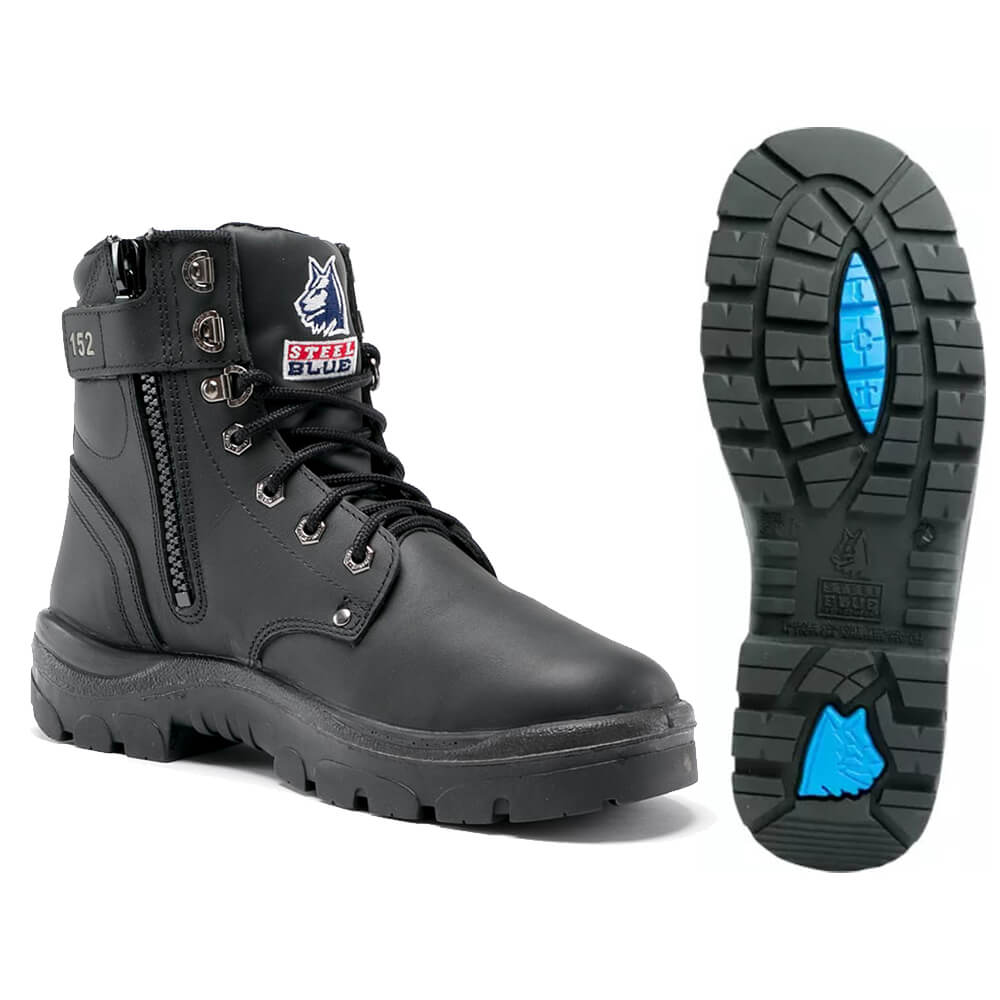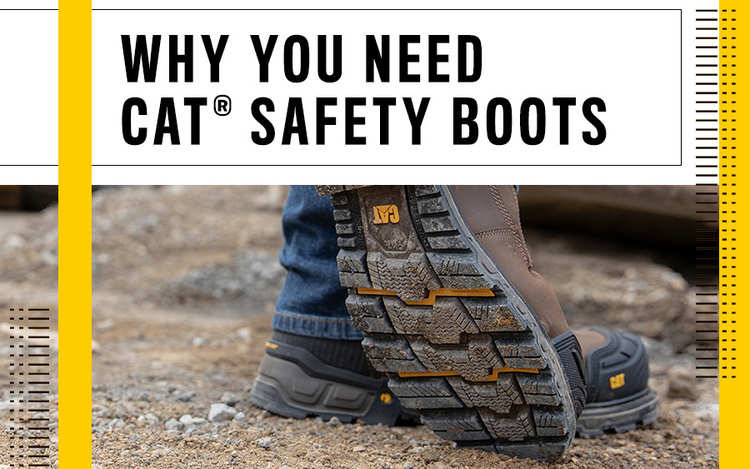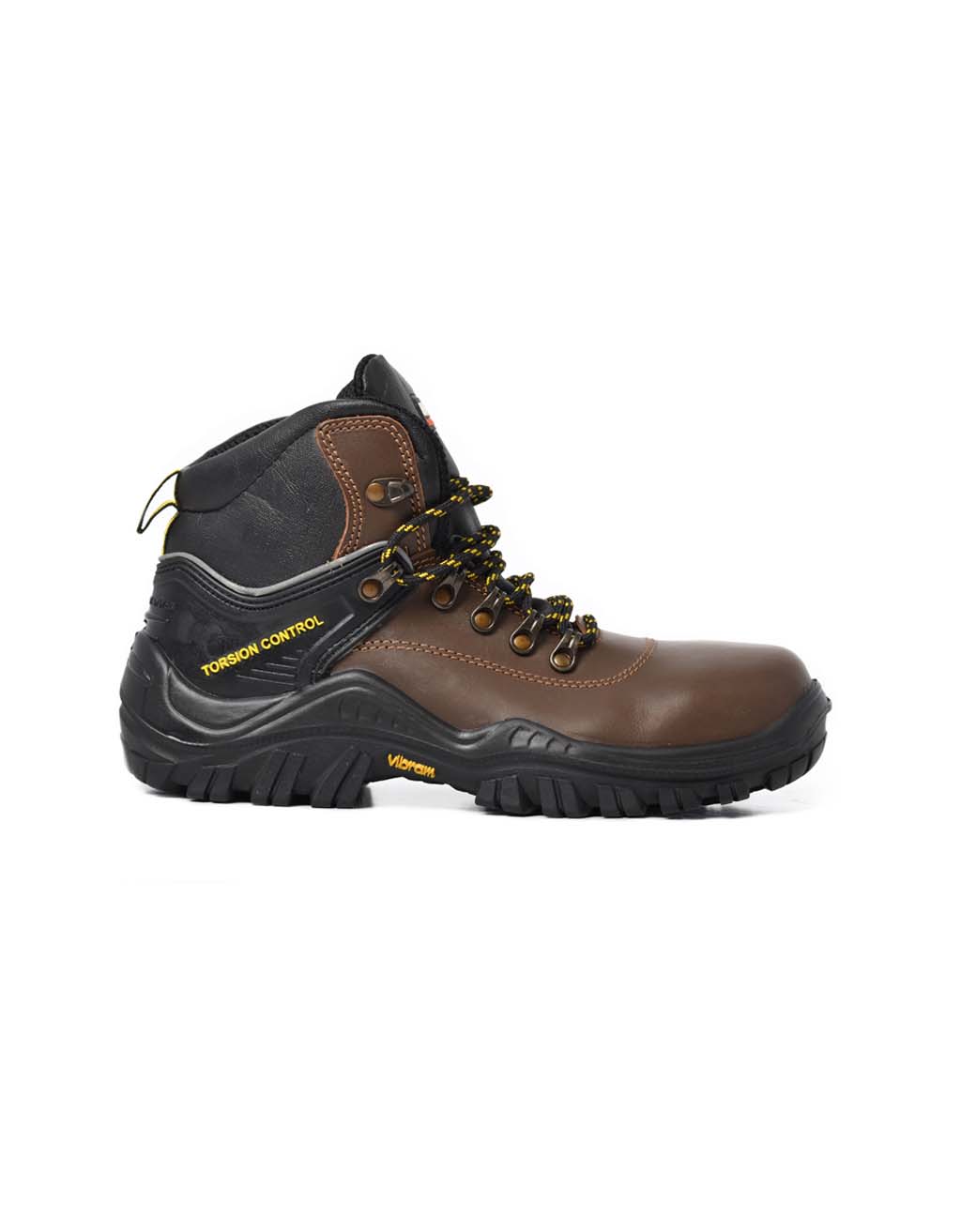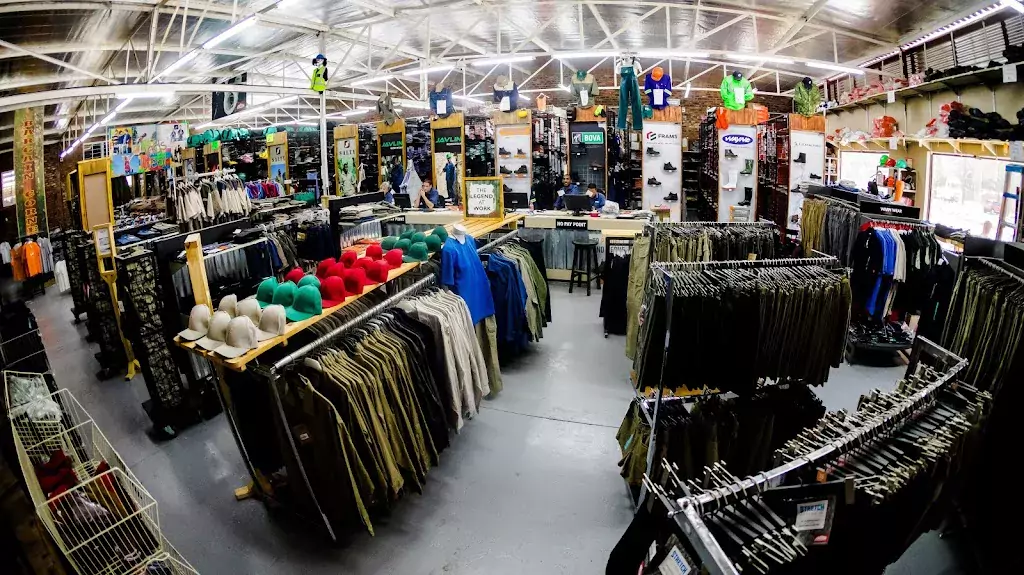The Ultimate Guide: Mens Safety Boots South Africa

Overview of the importance of safety boots in South Africa
In South Africa, Men's safety boots are a crucial part of personal protective equipment (PPE) for workers in various industries. These boots are designed to protect the feet from falling objects, sharp objects, chemicals, and electrical hazards. They provide protection and offer comfort and support for workers who spend long hours on their feet. Safety boots play a major role in preventing accidents and injuries in the workplace, making them a top priority for employers and employees.
Common hazards in various industries
Different industries in South Africa face different hazards. Here are some of the common hazards and the importance of safety boots in each sector:
- Construction industry:
- Falling objects: Safety boots with steel toe caps can protect workers from injuries caused by falling tools, equipment, or materials.
- Heavy machinery: Safety boots with reinforced soles can provide protection from crushing injuries caused by heavy machinery.
- Manufacturing industry:
- Chemical spills: Safety boots with resistant materials can protect workers from harmful chemicals and corrosive substances.
- Slip and trip accidents: Safety boots with slip-resistant soles can prevent accidents on slippery surfaces.
- Mining industry:
- Falling rocks: Safety boots with metatarsal guards can protect workers from injuries caused by falling rocks or materials.
- Electrical hazards: Safety boots with electrically insulated soles can provide protection from electrical shocks.
- Agriculture industry:
- Sharp objects: Safety boots with puncture-resistant soles can protect workers from injuries caused by sharp objects like nails or thorns.
- Pesticide exposure: Safety boots with chemical-resistant materials can shield workers from harmful pesticides.
Overall, safety boots are necessary in each industry to ensure the well-being and safety of workers. Employers should prioritize providing appropriate safety boots to their employees to prevent accidents and meet the legal requirements for workplace safety.

Types of Safety Boots
Steel toe boots
In South Africa, one of the most common types of safety boots is the steel toe boot. These boots are equipped with a reinforced steel cap in the toe area, providing excellent protection against impact and compression hazards. The steel toe cap can withstand heavy falling objects, ensuring the safety of the wearer. Steel toe boots are commonly used in industries such as construction, manufacturing, and mining, where there is a risk of objects falling or heavy machinery being operated.
Composite toe boots
Another type of safety boot that is gaining popularity is the composite toe boot. These boots are made from non-metallic materials such as Kevlar, carbon fibre, or plastic composite, offering a lighter and more comfortable alternative to steel-toe boots. Composite toe boots are ideal for industries where workers may be exposed to electrical hazards as they do not conduct electricity. These boots provide the same level of protection as steel-toe boots but without the added weight.
In addition to steel toe and composite toe boots, there are also other types of safety boots available in the market, each designed to cater to specific workplace hazards. These include metatarsal boots that offer additional protection to the metatarsal bones, puncture-resistant boots that protect against sharp objects, and chemical-resistant boots that shield against corrosive substances.
When choosing safety boots, it is important to consider the specific hazards present in your industry and the level of protection required. Employers should provide their employees with the appropriate type of safety boots to ensure their safety and comply with workplace safety regulations.
Overall, safety boots are an essential part of personal protective equipment in South Africa. They not only provide protection against various hazards but also offer comfort and support for workers. By investing in high-quality safety boots, employers can create a safer work environment and reduce the risk of accidents and injuries.

Safety Standards for Safety Boots
South African Bureau of Standards (SABS)
When it comes to safety boots in South Africa, one of the key organizations that sets the standards is the South African Bureau of Standards (SABS). The SABS ensures that safety boots meet certain requirements and undergo rigorous testing to ensure their safety and durability. The SABS certification is a mark of quality and reassurance that the safety boots are fit for purpose.
Occupational Health and Safety Act (OHSA)
Another important legislation that governs the use of safety boots in South Africa is the Occupational Health and Safety Act (OHSA). This act outlines the responsibilities of employers in providing a safe working environment for their employees. It mandates that employers must provide personal protective equipment, including safety boots when there are certain workplace hazards present.
Under the OHSA, employers are required to conduct a risk assessment to identify the specific hazards in their workplace and determine the appropriate safety measures, including the type of safety boots required. They must also ensure that the safety boots provided meet the relevant SABS standards.
It is important for employers to comply with these safety standards and regulations to protect their employees from potential accidents and injuries. By providing high-quality safety boots that meet the necessary criteria, employers can create a safer work environment and reduce the risk of workplace incidents.
Overall, safety standards for safety boots play a crucial role in ensuring the protection of workers in South Africa. The SABS certification and the guidelines set by the OHSA help to ensure that safety boots provide the necessary level of protection against workplace hazards. By adhering to these standards, employers can prioritize the safety and well-being of their workers.

Factors to Consider when Buying Safety Boots
Comfort and fit
When purchasing safety boots, it is essential to prioritize comfort and fit. Ill-fitting boots can cause discomfort and even lead to foot problems such as blisters or calluses. Look for boots that have ample cushioning and support to ensure all-day comfort. Consider trying on different sizes and styles to find the perfect fit for you.
Slip resistance and traction
Another important factor to consider is the slip resistance and traction of the safety boots. Many workplaces have slippery surfaces or uneven terrain, and having boots with good grip can help prevent accidents. Look for boots with non-slip outsoles that provide excellent traction. Features such as deep treads or lug patterns can also enhance grip on various surfaces.
Comparison Table
| Comfort and Fit | Slip Resistance and Traction |
|---|---|
| Ample cushioning and support | Non-slip outsoles |
| Perfect fit for all-day comfort | Excellent traction on slippery surfaces |
| No foot problems such as blisters or calluses | Deep treads or lug patterns for better grip |
By considering these factors when purchasing safety boots, you can ensure that you are getting the right pair for your needs. Remember that safety should always be a priority, and investing in high-quality boots that meet safety standards is crucial for your protection in the workplace.

The Importance of Proper Care and Maintenance
Cleaning and maintenance tips
Proper care and maintenance of your safety boots are essential to ensure their longevity and effectiveness. Here are some tips to help you keep your boots clean and in good condition:
- Regularly clean your boots by removing any dirt, debris, or mud on the surface. Use a soft brush or cloth to gently scrub away the dirt. Avoid using harsh chemicals or abrasive materials that may damage the boots.
- If your safety boots are made of leather, apply a leather conditioner or moisturizer to keep the material supple and prevent it from cracking. This will also help maintain the water-resistance properties of the boots.
- For boots with fabric or mesh uppers, use mild soap and water to clean the surface. Avoid soaking the boots or using excessive water, as this may lead to mould or mildew growth. Air-dry the boots thoroughly before wearing them again.
- Check the laces regularly and replace them if they are frayed or worn out. Properly laced boots provide better support and protection.
- Inspect the soles of your boots for any signs of wear and tear. If the treads are starting to wear out, it may be time to replace them. Worn-out soles can compromise the slip resistance and traction of the boots.
Replacing worn-out boots
Over time, safety boots will naturally wear out due to daily use and exposure to various workplace conditions. It is crucial to inspect your boots and replace them when necessary regularly. Here are some signs that indicate it's time for a new pair:
- Significant wear and tear on the soles, with reduced traction and grip.
- Visible cracks or damage to the upper materials that compromise the boot's integrity and safety features.
- Sole separation from the boot upper indicates a weakened connection that may affect stability.
- Noticeable discomfort or lack of support despite proper cleaning and maintenance.
Investing in a new pair of safety boots when needed is crucial to ensure your continued safety and protection in the workplace. Don't compromise your well-being by wearing worn-out boots that no longer provide the necessary safety features.
By following proper care and maintenance practices and replacing worn-out boots, you can extend the lifespan of your safety boots and maximize their effectiveness in safeguarding your feet from workplace hazards. Remember, a well-maintained pair of safety boots is a crucial tool for a safe and productive work environment.

Best Safety Boots for Specific Industries
Construction and Building
When it comes to the construction and building industry, safety is paramount. The right safety boots can make all the difference in preventing accidents and injuries on the job. Here are some key features to look for when choosing safety boots for this industry:
-
Steel toe caps: Construction and building sites often involve heavy materials and equipment. Steel toe caps provide excellent protection against impact and compression, keeping your toes safe from falling objects or accidental bumps.
-
Slip-resistant soles: Construction sites can be slippery, especially during wet or rainy weather. Look for safety boots with slip-resistant soles that provide maximum traction on various surfaces to reduce the risk of slips and falls.
-
Electrical hazard protection: Construction sites often have exposed wiring and electrical equipment. Safety boots with electrical hazard protection can reduce the risk of electrical shock by providing insulation against live circuits.
-
Waterproof materials: Construction workers are exposed to various weather conditions, including rain and snow. Opt for safety boots made from waterproof materials to keep your feet dry and comfortable throughout the day.
-
Ankle support: The constant movement and heavy lifting involved in construction work can put a strain on your ankles. Look for safety boots with proper ankle support to minimize the risk of sprains or injuries.
Mining
Mining is a challenging industry that requires durable and reliable safety boots. The harsh and unpredictable conditions underground demand footwear that can withstand extreme temperatures, sharp objects, and hazardous materials. Here are some features to consider when choosing safety boots for the mining industry:
-
Metatarsal guard: Mining involves heavy machinery and falling objects, making metatarsal guards essential for protecting the entire foot, including the metatarsal bones. These guards provide extra coverage over the top of the foot, reducing the risk of crushing injuries.
-
Heat and chemical resistance: Mines can be hot and filled with hazardous chemicals. Look for safety boots that are heat-resistant and chemical-resistant to ensure maximum protection against burns and chemical spills.
-
Toe protection: In addition to steel toe caps, some mining boots come with additional reinforcement for extra toe protection. This can be in the form of a toe cap overlay or an additional layer of metatarsal protection.
-
Puncture-resistant soles: Mining environments often contain sharp objects, such as rocks or metal shards, which can penetrate the soles of standard boots. Choose safety boots with puncture-resistant soles to prevent injuries from punctures or cuts.
-
Breathable materials: Despite the challenging conditions, it's important to keep your feet comfortable and dry. Look for safety boots made from breathable materials that allow air circulation to prevent excessive sweating and odour.
By considering these industry-specific features, you can find the best safety boots for your specific needs. Remember, proper footwear is an investment in your safety and well-being, so choose wisely. Stay safe and protected in the workplace!

Additional Safety Features to Look for
Electrical hazard protection
When working around electrical equipment or in environments with exposed wiring, it's important to have safety boots that offer electrical hazard protection. These boots provide insulation against live circuits, reducing the risk of electrical shock. Look for safety boots with electrical hazard protection to ensure your safety in potentially hazardous situations.
Puncture resistance
In industries where sharp objects are present, such as construction or mining, it's crucial to have safety boots with puncture-resistant soles. These soles are designed to prevent sharp objects, like rocks or metal shards, from penetrating through the sole and causing injuries. By choosing safety boots with puncture-resistant soles, you can work with confidence, knowing that your feet are protected from potential punctures or cuts.
With these additional safety features, you can further enhance the protective capabilities of your safety boots and reduce the risk of accidents or injuries in the workplace. Remember to consider the specific hazards and requirements of your industry when choosing safety boots. By investing in high-quality safety boots that meet your needs, you are prioritizing your safety and well-being on the job.
Stay safe and protected by making informed choices when it comes to your safety boots. Your feet deserve the best possible protection, and by choosing the right safety boots for your specific industry, you can work with peace of mind, knowing that you have taken the necessary precautions to keep yourself safe. Don't hesitate to prioritize your safety and invest in appropriate safety footwear.

Recommendations for finding the right safety boots
Here are some tips to help you find the perfect safety boots for your needs:
- Consider the specific hazards in your workplace and choose safety boots that provide the necessary protection against those hazards.
- Look for safety boots that meet safety standards and certifications to ensure their quality and reliability.
- Choose safety boots with slip-resistant soles to prevent slips and falls, especially in wet or oily conditions.
- Ensure that the safety boots you choose are comfortable to wear for long periods, as discomfort can affect your productivity and focus.
- Try on different sizes and styles to find the best fit for your feet, as proper fit is crucial for comfort and safety.
By following these recommendations, you can find the right safety boots that offer the necessary protection and comfort for your job. Prioritize your safety and take the necessary steps to protect your feet in the workplace.

